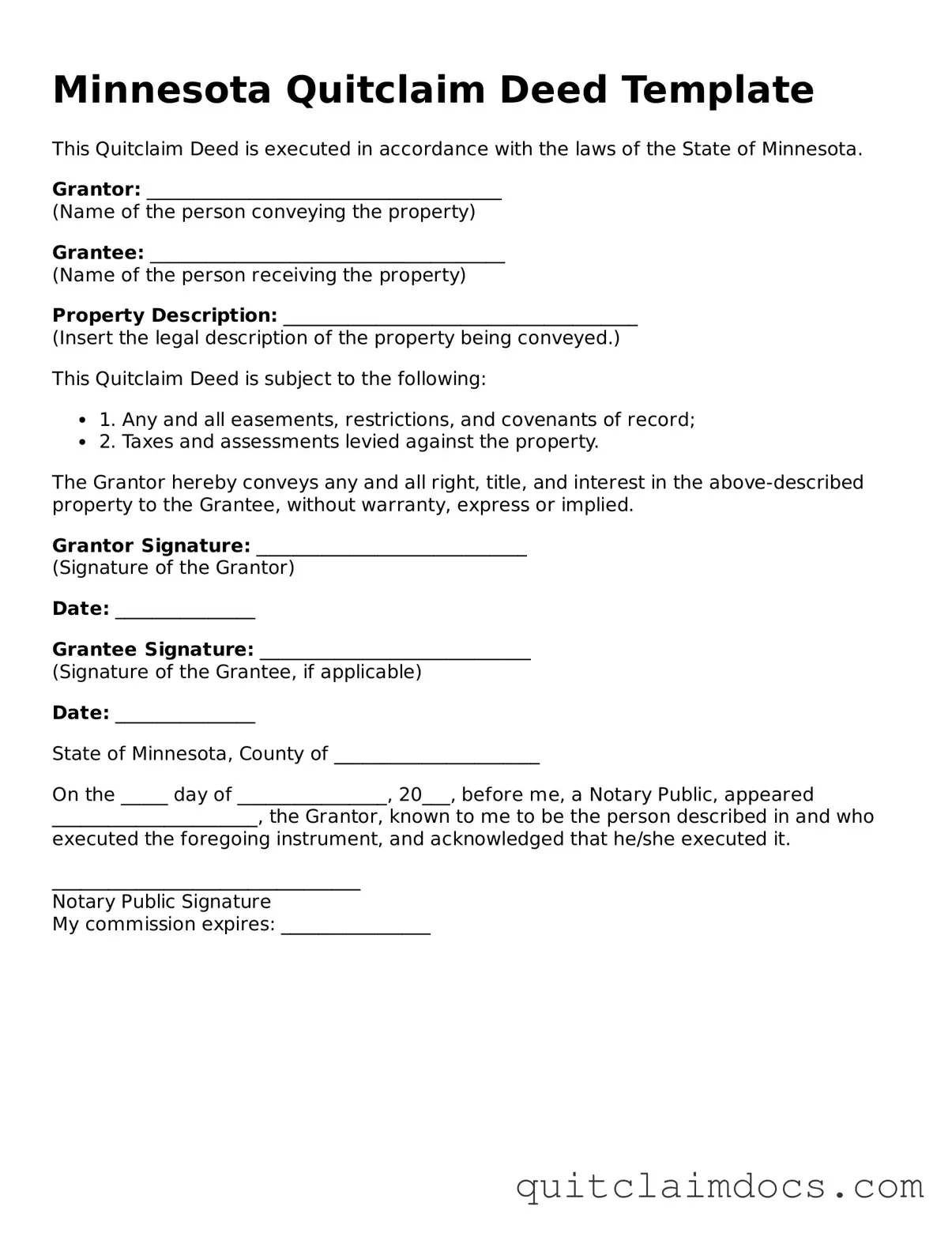Minnesota Quitclaim Deed Template
This Quitclaim Deed is executed in accordance with the laws of the State of Minnesota.
Grantor: ______________________________________
(Name of the person conveying the property)
Grantee: ______________________________________
(Name of the person receiving the property)
Property Description: ______________________________________
(Insert the legal description of the property being conveyed.)
This Quitclaim Deed is subject to the following:
- 1. Any and all easements, restrictions, and covenants of record;
- 2. Taxes and assessments levied against the property.
The Grantor hereby conveys any and all right, title, and interest in the above-described property to the Grantee, without warranty, express or implied.
Grantor Signature: _____________________________
(Signature of the Grantor)
Date: _______________
Grantee Signature: _____________________________
(Signature of the Grantee, if applicable)
Date: _______________
State of Minnesota, County of ______________________
On the _____ day of ________________, 20___, before me, a Notary Public, appeared ______________________, the Grantor, known to me to be the person described in and who executed the foregoing instrument, and acknowledged that he/she executed it.
_________________________________
Notary Public Signature
My commission expires: ________________
